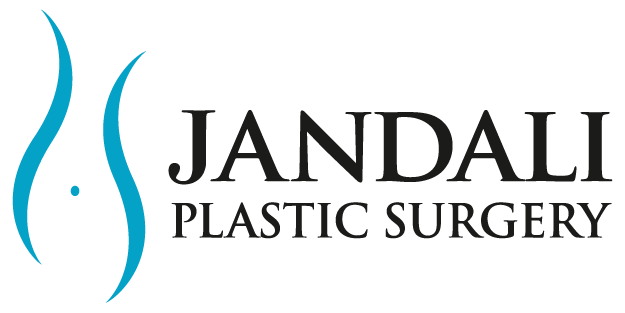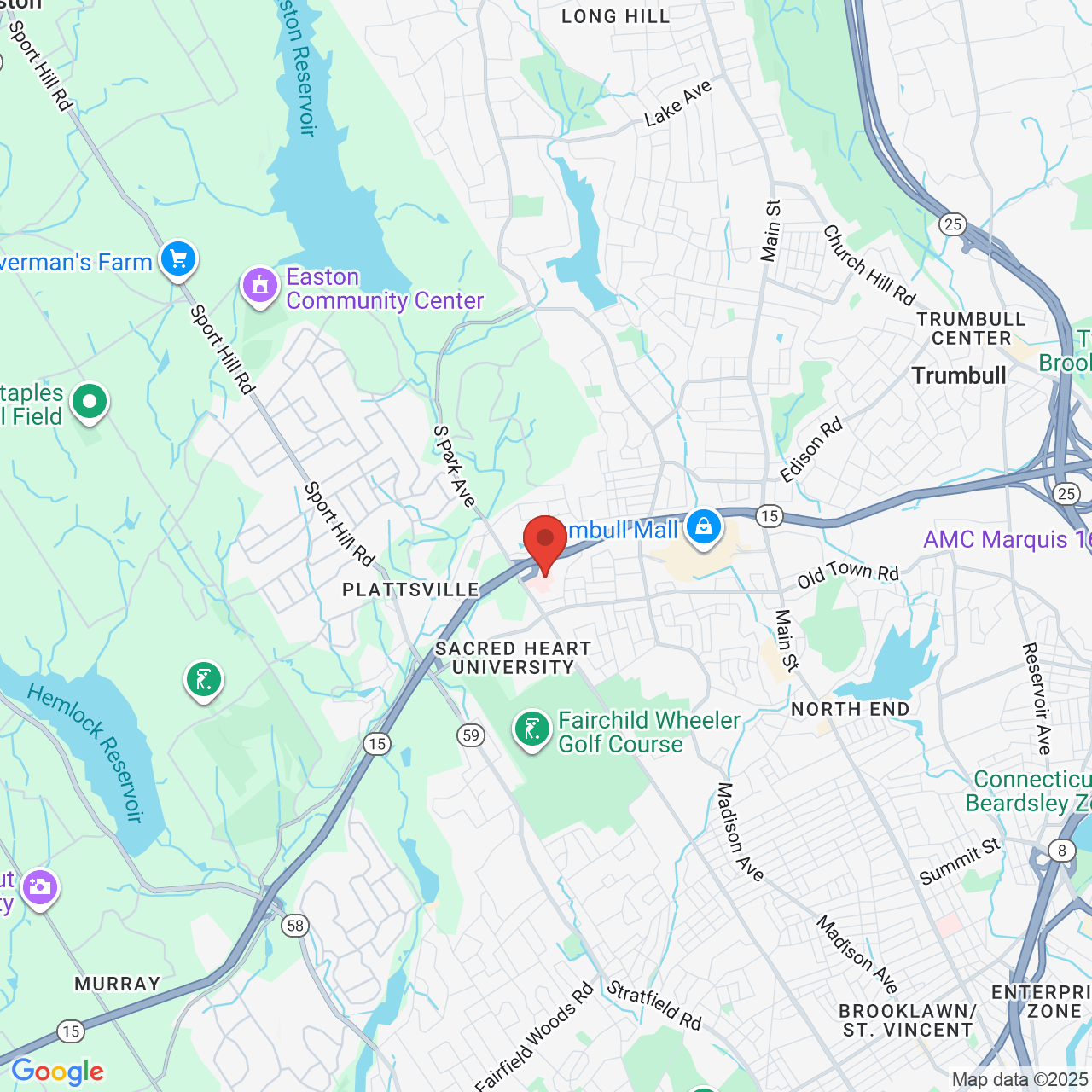INFANT EAR MOLDING PROTRUDING EARS, EAR DEFORMITY, EARWELL
Infant Ear Molding to Correct Newborn Ear Deformities in CT, NJ, NY, RI, MA
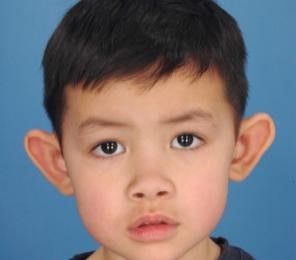 Newborn ear deformities occur fairly frequently, with some studies reporting an incidence as high as 20-35% in newborns. This includes prominent ears, protruding ears, ears that stick out, folded ears, floppy ears, and pointed ears. Parents often think their baby will “grow into their ears”. However, studies have shown that if the deformity doesn’t correct on its own in the first week after birth, it will remain the same or worsen. About 70% of baby ear deformities will not improve with time alone.
Newborn ear deformities occur fairly frequently, with some studies reporting an incidence as high as 20-35% in newborns. This includes prominent ears, protruding ears, ears that stick out, folded ears, floppy ears, and pointed ears. Parents often think their baby will “grow into their ears”. However, studies have shown that if the deformity doesn’t correct on its own in the first week after birth, it will remain the same or worsen. About 70% of baby ear deformities will not improve with time alone.
Ear molding is a proven, non-surgical and painless technique which reshapes the baby’s ears and obtains a permanent result. If ear molding is not performed in the first 2 months after birth, the only option is surgery later in life (otoplasty).
About 70% of baby ear deformities will not improve with time alone.

EarWell Infant Ear Correction System
EarWell is a revolutionary clinically proven infant ear molding system that we customize and apply to your newborn’s ears in the first few weeks after birth. It is placed in the office painlessly and non-surgically and without any anesthesia. It is worn for 4 to 6 weeks and at the end of the molding, your child’s ear or ears will be shaped normally. We also use another ear molding system made from liquid silicone for certain deformities requiring more customization.
Infant Ear Molding in Connecticut, New Jersey, New York, Massachusetts & Rhode Island
After an infant is born, the maternal estrogen hormone is still circulating in the infant’s system for a few weeks after birth. Estrogen keeps the cartilage of the ears soft and pliable, allowing them to be reshaped and molded. The earlier the custom mold is placed on the ear, the better and quicker it works to reshape and mold the cartilage into a normal shape.
Ear Molding for Babies
Ear molding is very effective when started on infants less than three weeks of age, with over 90% complete correction. It has been successful on children slightly older, but favorable results diminish with each passing day. Therefore, it is key to schedule a consultation within days after birth, so that a mold can be placed as early as possible to obtain the best result. Still, we have had nice improvement on newborns even up to 8 weeks old, depending on the severity and type of deformity. If the baby was born prematurely, the cartilage is softer for longer and ear molding can still be performed even up to 12 weeks old.
Over 90% complete correction of ear deformities when molding is performed early in life
Contact Us for Infant Ear Molding
If your newborn needs ear molding, be sure to contact our office for an appointment as soon as possible. This will allow enough time to get insurance approval if necessary. Call us at (203) 374-0310. The ear mold device will be placed at the first office visit after consultation and discussion.
Visit Our Complete Ear Molding Photo Gallery
Prominent Ears – Protruding Ears – Baby Ears that Stick Out – Cup Ear – Constricted Ear
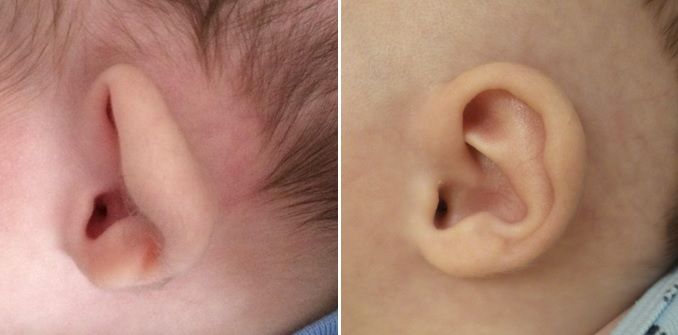
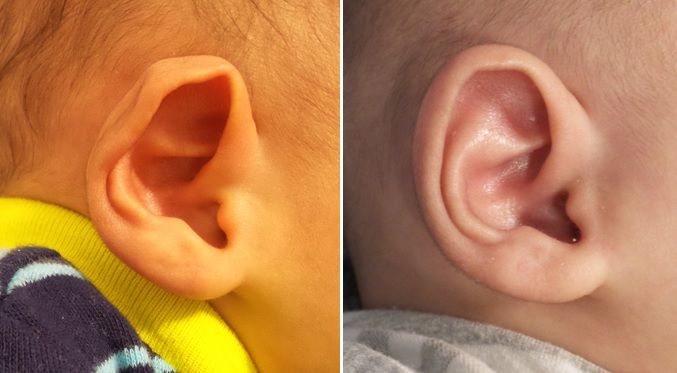
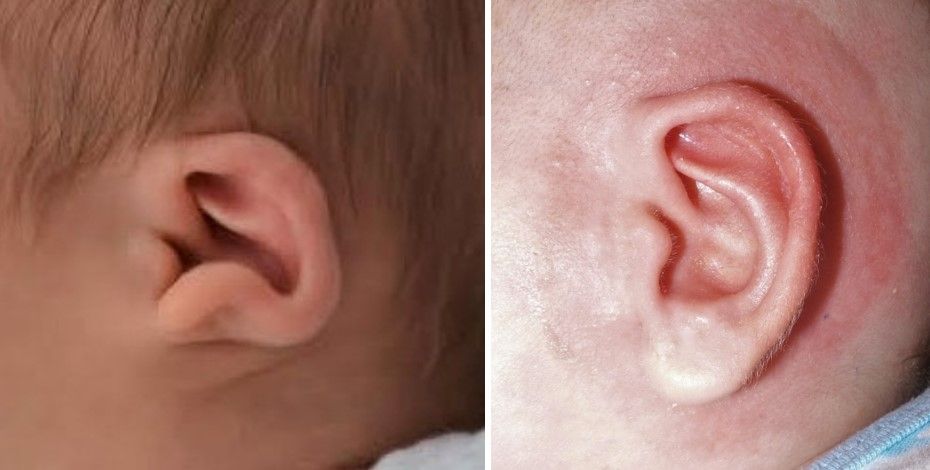
Ear Lidding – Lop Ear – Baby Ears that Fold Over – Floppy Baby Ear
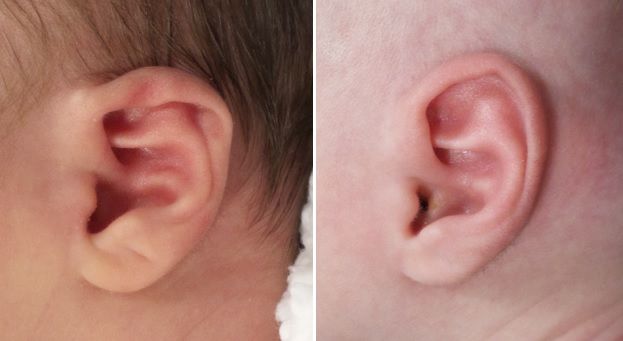
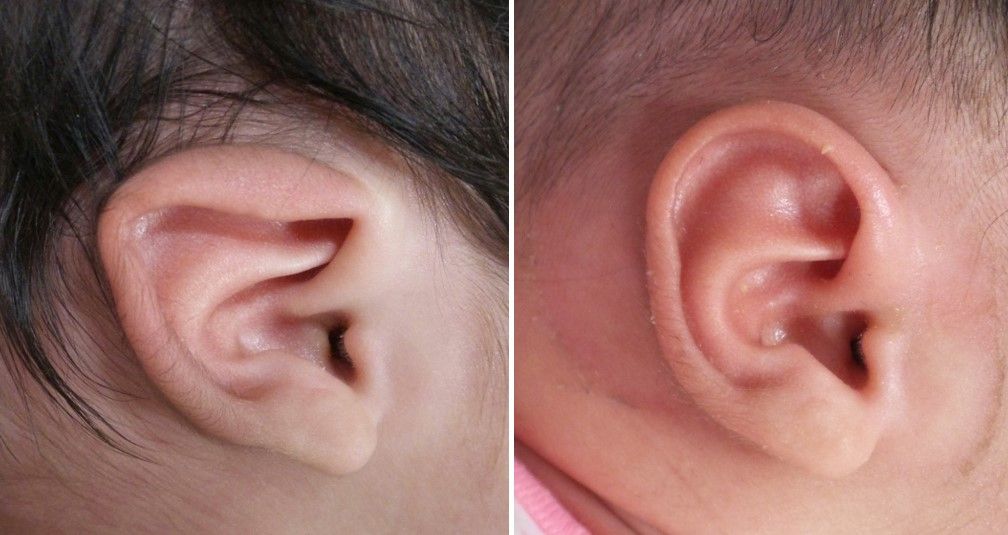
Stahl’s Ear – Spock Ear
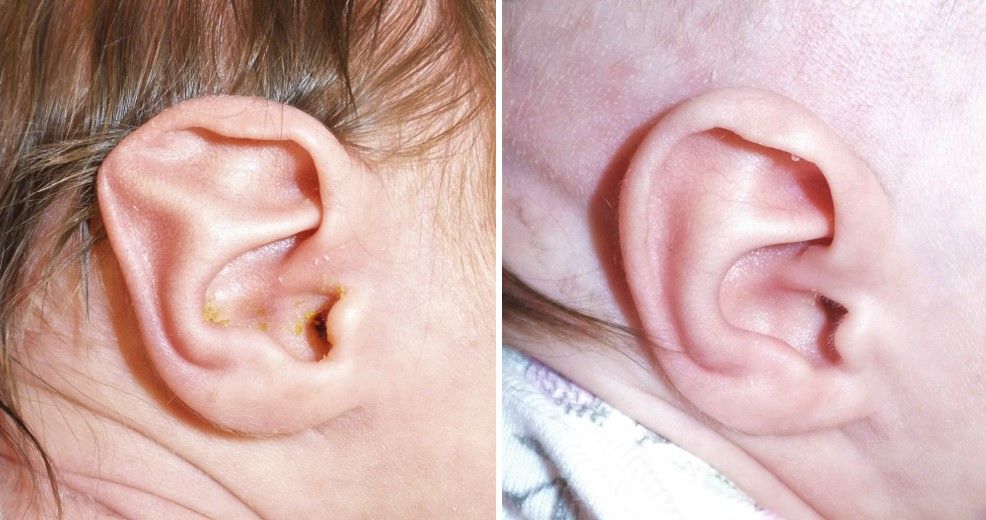
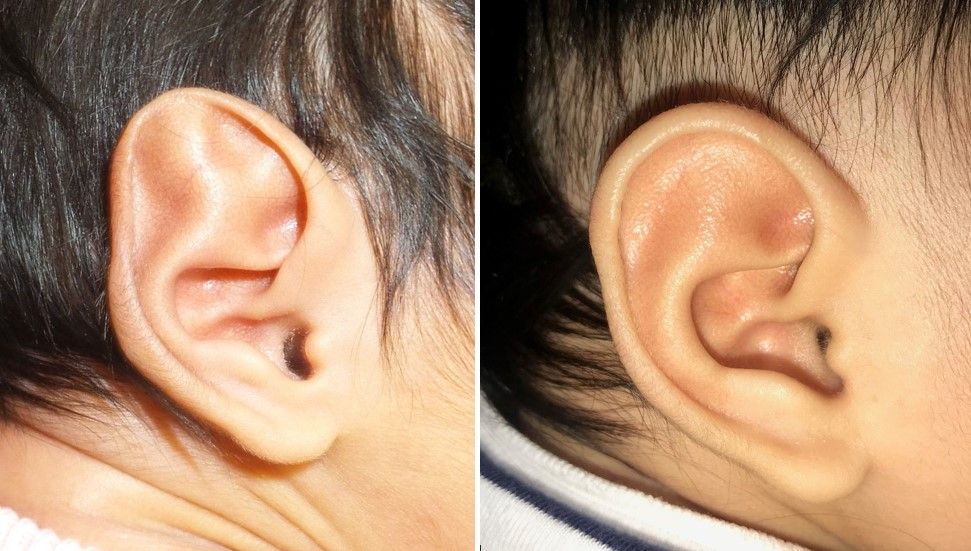
Helical Rim Deformities - Crooked Baby Ear - Baby Ear Kink - Pointed Baby Ears – Pointy Ears
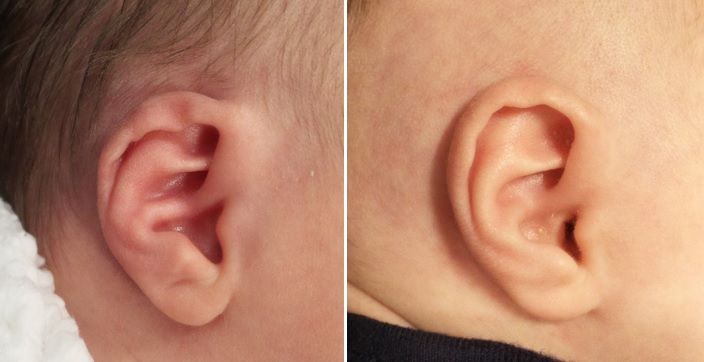
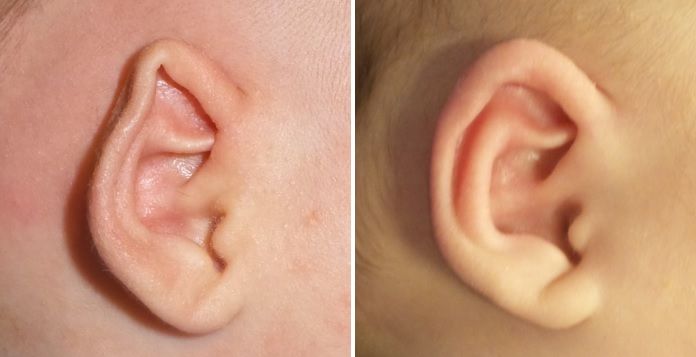
Unfolded Baby Ear - Flat Baby Ear
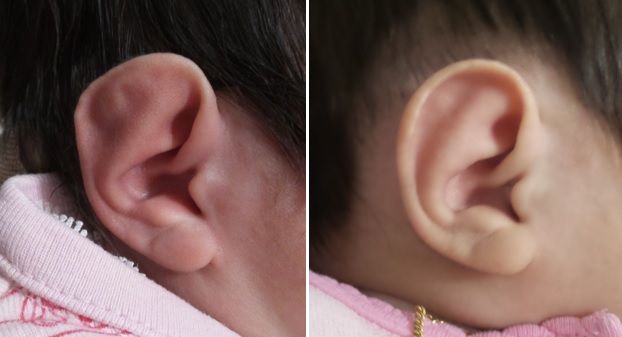
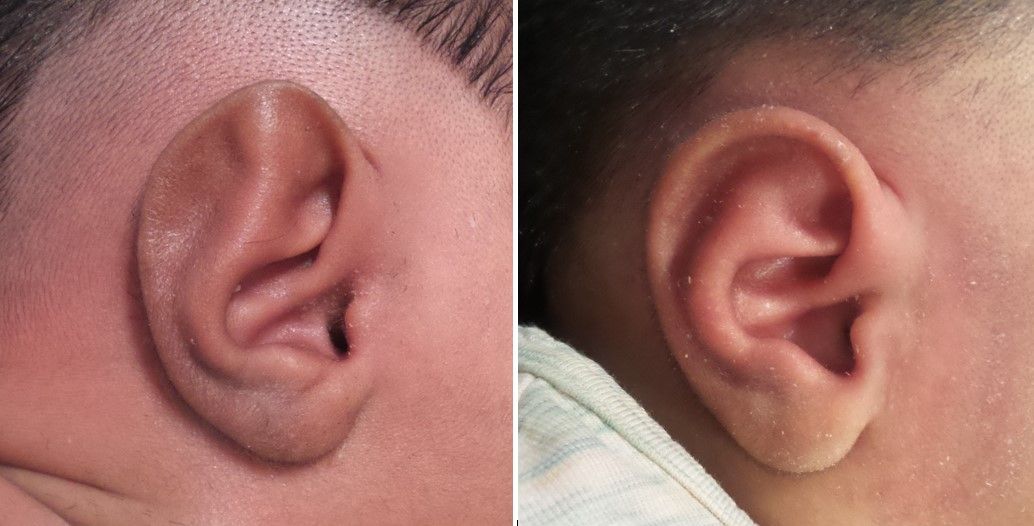
Conchal Crus Ear Deformity
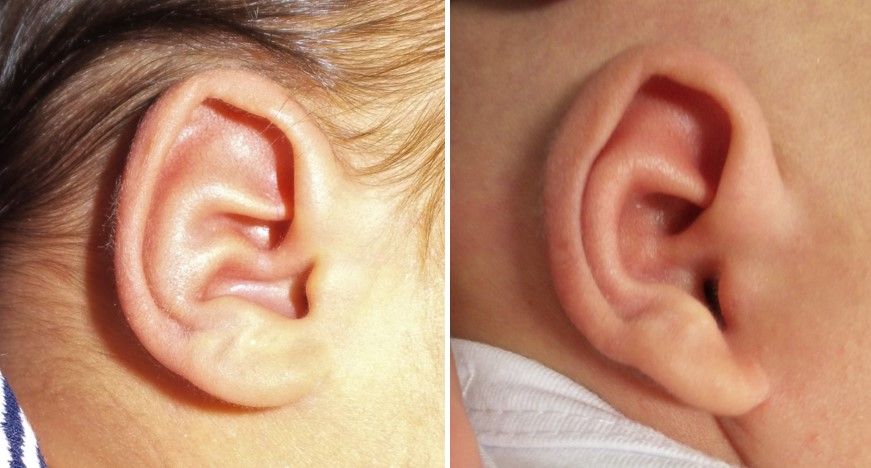
Cryptotia Ear Deformity - Top of Ear Hidden Under Skin
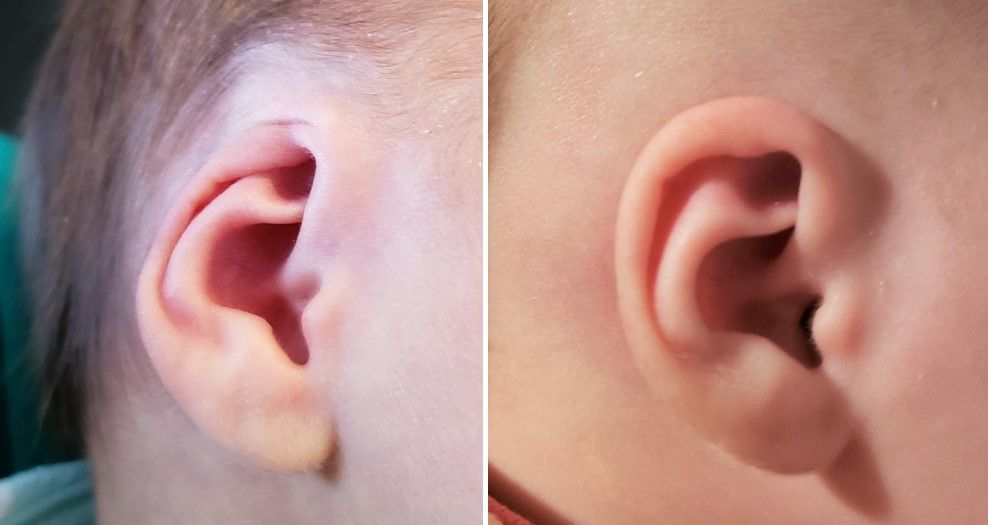
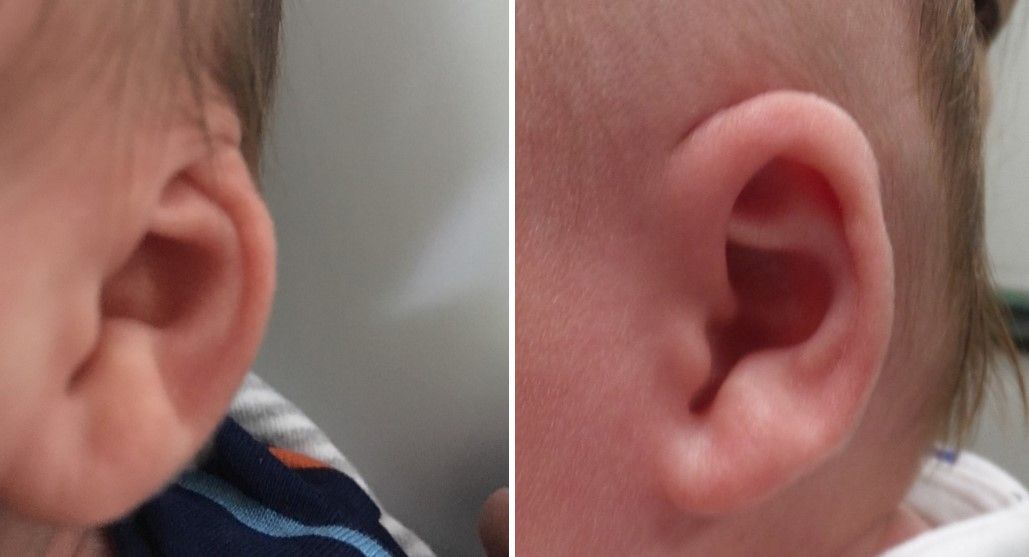
Q&A for Infant Ear Molding
Do babies grow into their ears if they have protruding ears or another ear deformity?
No. Studies show that 2/3 of all deformities or protruding ears will remain the same or worsen with time. Ear molding can correct this non-surgically and painlessly.
When does baby ear cartilage harden?
Baby ear cartilage starts to harden at about 6-7 weeks of age. In babies born prematurely, the cartilage stays softer for longer. Therefore, we want to start ear molding before the cartilage hardens, preferably in the first 3 weeks after birth.
How does ear molding reshape a baby’s ears?
Ear molding puts gentle pressure on the cartilage of the ear while it is still soft. The cartilage bends into the correct shape over a few weeks with the mold in place. The mold is then kept in place when the ear cartilage starts to harden to make sure it hardens into the right shape.
Can I tape my baby’s ears back?
Ear tape for protruding ears or other ear deformities is not as effective as ear molding. Tape can also put pressure on the outer rim of the ear, unfolding it and possibly causing further harm. In addition, tape cannot mold and fix complex deformities which need to be completely reshaped.
Are baby ear splints the same as custom ear molding?
No. Ear splints, like EarBuddies, are usually pre-made and one size fits all. They can be cumbersome to keep in the correct position and the tape can pull or distort the ear. They are inadequate for severely protruding ears or more complex ear deformities.
How is ear molding performed?
A small area of hair on the scalp around the ear is trimmed. The area is then cleaned and the mold is customized and placed to correct the prominent ear or the ear deformity.
Can ear molding affect my baby’s hearing?
Not at all. The ear canal is never covered by the mold, so that hearing is not affected. The EarWell infant ear molding system has holes in the front surface to allow sound to pass through.
Is infant ear molding painful?
Infant ear molding is not painful to apply or to keep on. It is completely non-surgical and applies gentle pressure to reshape the ear. A medical grade adhesive is used to keep the soft silicone mold in place. Most babies completely ignore it once it is in place.
Can I get the ear mold wet and does it affect nursing?
Due to the adhesive that is holding the mold in place, the area around the mold cannot get wet. The baby can still be bathed and the top of the head can be washed.
The ear mold should not affect nursing at all. We do recommend placing a clean cloth over the area to prevent milk or formula from dripping or being spit up into/onto the mold.
How long are the ear molds in place?
Depending on what age we start the ear molding process, as well as the severity of the prominence or deformity, we usually mold for 4 to 6 weeks. The adhesive on the molds usually lasts about 2 weeks, so it does need to be replaced once or twice with a visit to the office.
How successful is ear molding?
Ear molding for protruding ears, folded ears, crooked ears, and pointed ears is very successful. If started early enough, over 90% of babies get a complete correction of both ears or matching one abnormal ear to the other ear.
Where is ear molding performed? (Ear Molding in Connecticut, Ear Molding in New Jersey, Ear Molding in New York, Ear Molding in Massachusetts, Ear Molding in Rhode Island)
Ear molding is performed at our plastic surgery office in Fairfield County, Connecticut. We have performed ear molding on patients from Connecticut, New Jersey, New York, Massachusetts, and Rhode Island. If you are traveling from a distance, we will accommodate your schedule to allow an easy drive with minimal traffic.
What needs to be done before our ear molding appointment?
Please bring a pacifier and a swaddle blanket to the appointment. Please feed, burp, and change your baby’s diaper before the appointment. This makes the babies as comfortable as can be, and they often fall asleep for the entire procedure!
What happens if the ear mold falls off?
We teach parents how to strategically tape the edges of the ear mold when they start to get loose. We can always be reached if there is any issue and once it starts to loosen or detach, we will have you return to our office to have a new mold placed.
Does Insurance Cover Infant Ear Molding?
The vast majority of insurances will cover infant ear molding for newborn ear deformities, since it is considered reconstructive and non-cosmetic. Dr. Jandali will work with all insurances to get approval and will guide you in how to appeal the insurance company if coverage is denied.
Is ear pinning surgery an option?
Yes, if ear molding is not performed in time, and the cartilage hardens, then ear pinning surgery (otoplasty) can be performed when your child is about 5-6 years old. The goal with ear molding is to avoid surgery, which has added risks, downtime, recovery, and cost.
Ear molding is covered by insurance during infancy, but otoplasty is considered cosmetic and is an out of pocket cost (not covered by insurance) when your child is older.
